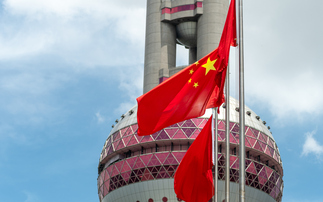Eradicating poverty may seem like one of the most daunting tasks set by the Sustainable Development Goals, but with these pointers from the experts businesses can help lead the way
As things currently stand, the world is on track to miss the first Sustainable Development Goal (SDG), which targets the eradication of extreme poverty by 2030.
According to the World Poverty Clock, which tracks in real time the number of people escaping extreme poverty around the world, every second 1.1 people are escaping extreme poverty, defined by the UN as those living on under $1.25 per day. But to hit SDG1's targets of eradicating extreme poverty by the end of the next decade, that rate needs to tick up to 1.6 people per second.
Business has a vital role to play in ramping up action against poverty. From creating the jobs and opportunities that lead to sustainable incomes, to lobbying governments to introduce effective poverty-fighting economic policies, firms can make a real difference towards making poverty history, for good. "Without the private sector, the global goals will not be realised," Lisa Kingo, CEO and executive director of the UN Global Compact, told attendees at the SDG Business Forum in New York earlier this year.
But with such a broad, ambitious goal, it is hard for companies to know where to start. BusinessGreen spoke to some of the world's leading experts on how businesses should practically address SDG1 through their own operations - here are their key recommendations.
1. Do no harm
It may be a guiding principle for medical professionals around the world, but the mantra 'do no harm' is also central to any successful business approach to the SDGs. To make sure that firms looking to tackle SDG1 don't roll back on progress in other areas - for example, by clearing rainforest to bring agricultural jobs to a region, at the expense of biodiversity loss and carbon emissions that could lead to worsening poverty down the line - businesses should start their SDG efforts by applying the 10 Principles of the UN Global Compact, says Lila Karbassi, chief of programmes at the UNGC.
"If all companies subscribed to the 10 principles of the UN global compact we would already go a long way to delivering on the global goals," she says.
The 10 principles are effectively a checklist for running a good business. They include support and protection for human rights, effective abolition of child labour, a precautionary approach to environmental challenges, and a promise to work against corruption in any form. Adhering to these principles is the first step to ensuring all subsequent actions on the SDGs act as a positive force for sustainable development, rather than an inadvertent impediment to their aims.
2. Understand the problem - and find out which solutions work
Any number of factors conspire to lock people in poverty, from government corruption and conflict, to poor education and extreme weather. The first step to tackling poverty effectively is working out which of those factors are related to your business operations and how exactly you can address it, says Marika McCauley Sine, vice president for global human rights at Mars.
"Poverty is a manifestation of a lack of respect for rights, lack of the ability to manage environmental challenges and threats like climate change, low income and a range of other drivers," she says. "The first step is understanding the barriers that people face to rising up out of poverty and reflecting on one's ability to impact those barriers."
Mars started this process in its own operations in 2016, by taking a long look at its supply chain to work out where the pressure points are. Its Farmer Income Lab, which launched last year, then set about identifying proven strategies for alleviating poverty among smallholder farmers. "That's been our brief and our focus for this first year of the Lab - what does work to enable farmers to increase their income?" says McCauley Sine. "It's been fascinating to begin to review the evidence base, to take a look at the landscape of what is actually out there in terms of evidence and begin to see what really does work, what people think works but actually may not, and to begin to identify some of the common factors that most successful programs out there share."
Solving the poverty problem is often not as simple as bumping up the pay for those at the bottom of the ladder, she warns, and firms may need to prepare themselves for more radical change in how their business operates. "Perhaps historically the business sector has approached the issue of poverty from a livelihood lens," she says. "It's been focused on enhancing livelihoods, on making people better off who contribute to the success of global business supply chains. I think Mars' view is that it is not enough. What we need to do is reflect deeply on the current realities that people face who are in poverty, who are touched in some way by the reach of our global value chains, and consider what real transformation looks like. And where there is poverty, challenging ourselves to go beyond incremental improvements to deliver real transformation".
3. Don't plump for the obvious goal
If you're a renewable energy company, your first instinct on looking at the SDGs might be to think 'great, we are contributing to SDG 7 - clean and affordable energy - and that's our role in the SDGs sorted'.
Not so fast, says James Gomme, director of SDGs at the World Business Council for Sustainable Development (WBCSD). "You need a robust analysis of all of the goals as your starting point, and not passing over anything in that initial scan," he says. "You need to do that initial analysis and have that conversation internally, and perhaps with peers and stakeholders as well, around what SDGs can you really drive direct impact on through your operations and through your supply chain."
You should only start to narrow down on the goals you want to focus on once that analysis is complete, he adds.
Companies assuming that SDG1 doesn't apply to them is one of the major reasons why it is ranked as a low-priority goal for the business community. But by doing a first broad sweep of all 17 Goals - and understanding how each one touches your business operations - SDG1 may not be so often neglected by the business community.
And don't be fooled into thinking SDG1 is one for governments rather than business because of the way it's written. WBCSD's Gomme advises firms to look past the "developmental" language - because there is a clear role for business in tackling poverty.
"All the text is written for governments, and it's written in UN language, and it's a case of understanding how that interacts with your business, and understanding what you can do on that agenda," he stresses. "And the companies that understand that best and put time into interpreting that agenda for their business will be the companies that are ultimately able to leverage the opportunities that the SDGs represent."
4. Work backwards
Mike Tuffrey, co-founder of sustainability consultancy Corporate Citizenship, says many corporates are making the mistake of assessing how their activities are already contributing to an SDG, rather than working out what is needed to help hit SDG1's specific ambitions.
Firms should look more closely at the gap between what is happening on the ground today, and where the SDG or its sub-target say we should be in 2030, he says. "They are not working back on an individual goal from what's required to say 'what do we need to do?'"
It is worth remembering that although the headline SDGs are broad, the 169 sub-targets offer explicit detail on what's expected. SDG1, for example, has five sub-targets:
- By 2030, eradicate extreme poverty for all people everywhere, currently measured as people living on less than $1.25 a day.
- By 2030, reduce at least by half the proportion of men, women and children of all ages living in poverty in all its dimensions according to national definitions.
- Implement nationally appropriate social protection systems and measures for all, including floors, and by 2030 achieve substantial coverage of the poor and the vulnerable.
- By 2030, ensure that all men and women, in particular the poor and the vulnerable, have equal rights to economic resources, as well as access to basic services, ownership and control over land and other forms of property, inheritance, natural resources, appropriate new technology and financial services, including microfinance.
- By 2030, build the resilience of the poor and those in vulnerable situations and reduce their exposure and vulnerability to climate-related extreme events and other economic, social and environmental shocks and disasters.
To make a real impact on a goal, firms should understand the sub-targets and work backwards, to get a clear idea of the ambition gap that needs filling, Tuffrey concludes.
5. Harness your lobbying power
Tackling SDG1 doesn't necessarily mean flying in armies of volunteers to run resource-intensive projects on the ground - companies should not disregard their influence to change government and social policy, argues Oxfam's Matthew Spencer.
He points to the example of Myanmar, where in 2015 the government was proposing to create a minimum wage of US$2.60 per day for workers. Garment manufacturers in the country were proposing an opt-out for their industry, but after 30 European companies including Tesco and M&S wrote to the Myanmar government opposing the suggestion on the grounds that it would deter them from investing in the country, the government forced through the new base wage.
"That [letter] helped give the government confidence that they could go through with that sensible social protection, anti-poverty measure, and as a result 30,000 garment workers have benefited," Spencer says. "So that's an example of business working to improve the conditions of the poorest in their supply chain."
6. And if in doubt, start with the UN's four top actions
The UN Global Compact has helpfully identified for top business actions for SDG1, for firms still struggling to determine how best to play their part.
Karbassi explains: "In the case of SDG1 we have four actions that we identify as business leading actions. The first one is the creation of secure and decent jobs, particularly for vulnerable populations.
"The second one is the empowerment of disadvantaged groups, particularly in terms of economic empowerment.
"Then we have the engagement of companies around their supply chain, and the ability to provide decent working conditions for employees around the supply chain".
Finally the fourth action is around developing goods and services "that would target vulnerable groups" and grow the green economy. "There's a whole market around that which is not fully taken advantage of," she says - pointing to products such as mobile banking applications, microloans, and home solar systems.









